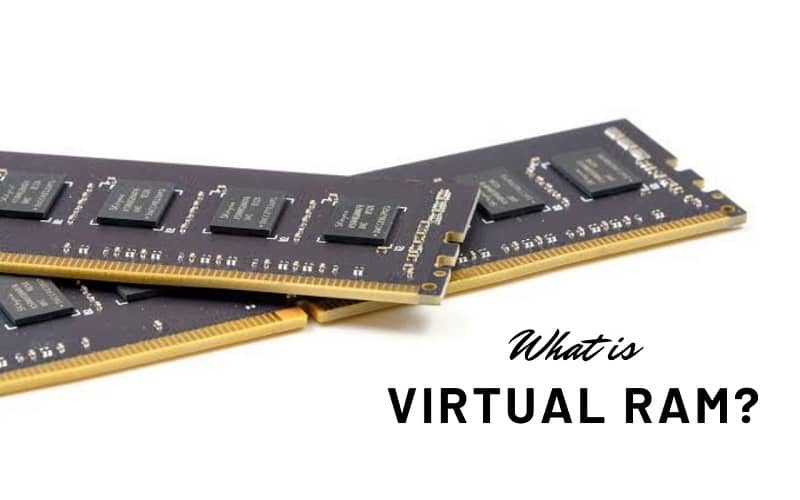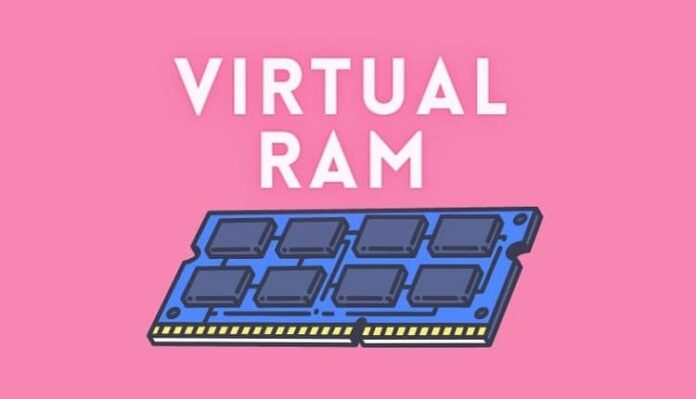The need for improved computing capacity is constantly expanding in the rapidly developing world of technology. Virtual RAM (Random Access Memory) happens to be a ground-breaking approach that pushes the limits of computing power and has evolved to satisfy these demands. The concept of Virtual RAM enables computers to run resource-intensive apps and undertake increasingly demanding tasks without having to significantly upgrade their hardware. Here, in this article, we will further discuss the Pros and Cons of Virtual RAM.
Understanding how Virtual RAM Works:
RAM is critical to computer speed because it provides fast and temporary storage for data that the CPU needs to access quickly. RAM has traditionally been a physical component integrated into a computer system. Virtual RAM, on the other hand, functions by utilizing a portion of the computer’s hard drive capacity as an extension of physical RAM.

Virtual RAM, also known as a swap file or page file, functions as a backup memory for your computer. When your computer’s regular memory (RAM) is insufficient to handle all of your activities, it shifts some less important data from RAM to the hard disk’s virtual RAM.
Then, this allows your computer to free up space in regular memory for more critical tasks, allowing you to multitask without your computer crashing due to memory overloading.
Nowadays in Nepal, many smartphone brands are advertising their smartphones as 16GB RAM (8+8*GB). What it means is that the phone has 8 GB of physical RAM present in the device and the device is capable of using 8 GB from its ROM as a virtual RAM. Many users might get confused between the concept of 8+8 RAM and mistake it for another RAM present in the phone itself. However, it simply isn’t the case and the phone uses some space from its ROM as a virtual memory to handle tasks and operations.
Pros of Virtual RAM:
Boosted Performance
Virtual RAM enhances system speed greatly by offering additional memory resources to address resource-intensive tasks. It enables computers to run many apps concurrently without slowing down or losing responsiveness.
Scalability
Virtual RAM is a versatile way for extending a computer’s memory capacity. It enables users to tailor the size of virtual RAM to their unique requirements, assuring optimal performance dependent on the workload.
Cost cutting
Virtual RAM is a low-cost way to improve a computer’s performance. Rather than investing in costly physical RAM upgrades, virtual RAM makes use of available hard drive capacity, reducing the requirement for extra hardware purchases.
Application Support
Applications that are resource-intensive, like video editing software or sophisticated 3D modeling tools, frequently use a lot of storage. Virtual RAM allows computers with limited physical RAM to handle these applications efficiently, hence broadening the range of tasks that may be completed on lower-spec machines.
While the Pros of the Virtual RAM are plenty, it certainly comes with its own set of Cons as well.

Cons of Virtual RAM:
Slower Functionality
When the operating system has to access virtual RAM data or instructions, it must read them from the slower hard disk rather than the faster physical RAM. As a result, performance will be slower and response times will be longer.
Fragmentation
Virtual RAM files can get fragmented over time, which means they are distributed over the hard disk. Fragmentation can slow down performance even further because the operating system has to look for and put together fragmented data.
Volatile nature
Virtual RAM is volatile memory and temporary. It loses data when the computer is shut off. As any data stored in virtual RAM is lost, it is unsuitable for long-term storage or critical files.
Future Applications:
Virtual RAM is a huge step forward in meeting the ever-increasing processing power demands. Virtual RAM will play an even more crucial role in optimizing system performance as technology develops, software applications become more advanced, and data processing requirements increase.
Conclusion:
To summarize, virtual RAM is an innovative approach that allows computers to operate better and handle more demanding tasks without the need for costly hardware upgrades. It provides a budget-friendly and efficient method of increasing computational power while also ensuring system stability. As technology improves, virtual RAM will only be crucial in addressing modern computing’s growing needs, giving consumers more efficient and powerful experiences without breaking the bank.
- Also, read these articles,
How do you feel about the above article? Do let us know by commenting below.







